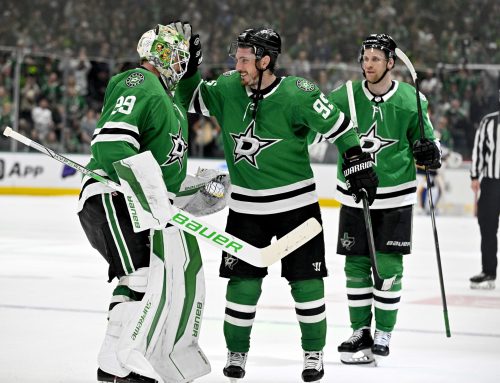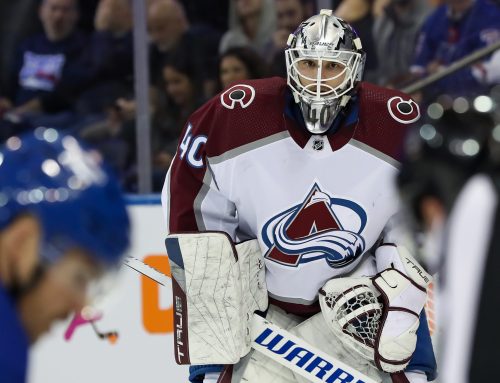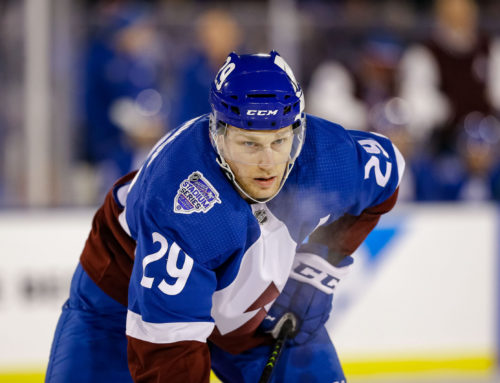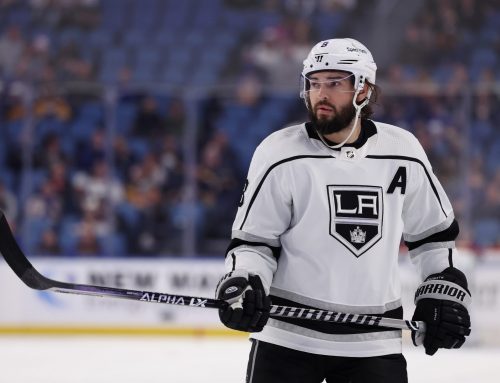Best in the West (2015) – Defensemen
Doran Libin
2015-08-03

Libin takes a look at the best fantasy bets for defensemen in the Western Conference
This week focuses on the 10 best defensemen in the Western Conference. Points will be the primary focus but there will be other factors in the ranking. The first of those will be goal scoring, with defensemen scoring less elite goal scoring ability should be given more weight. Second, how each defenseman is utilised will be considered as defensemen who receive more offense-centric minutes will be given favourable consideration. The type of usage is important as is the amount ice time each defenseman receives, both power play and even strength. Finally, points are paramount, but peripheral stats will be considered as a tie breaker.
Honourable mention: Drew Doughty and Alex Pietrangelo came in at 11 and 12 on the list respectively. Doughty missed the list largely because he plays on such a low scoring team that his fantasy values suffers. Pietrangelo missed the list because of his usage as he gets tougher even strength minutes as well as second unit power play time.
10. Duncan Keith, Chicago
Duncan Keith gets used in all situations but benefits from Niklas Hjalmarsson and partner taking the toughest minutes. It remains to be seen how the departure of Johnny Oduya will affect Duncan Keith’s usage but if the playoffs were any indication the effect should be minimal. Keith is not overly reliant on the power play for his points but there is room for growth this year. For only the second time in the last six years Keith saw his rate of production on the power play fall below four point per 60. The big difference between 2013/14 and 2014/15 was the rate at which Keith accrued secondary assists in 2013/14. Between that and his falling rate of power play production expect more points from Keith this coming this season.
9. Oliver Ekman-Larsson, Arizona
Ekman-Larsson scored 20 goals for the first time last season but this season comes with a lot of question marks. The departure of Keith Yandle for New York leaves a hole on the Coyotes’ power play, where OEL had half of his points last season. If Yandle’s departure results in more an offensive-centric focus to OEL’s minutes than even if there is a slight fall to OEL’s power play production he could make up for it at even strength. The second question mark surrounding OEL is how the diminished quality of his teammates affects OEL. The key will really be whether OEL can maintain last year’s shooting pace of 3.25 shots per game, any significant decline to the number of shots he takes would be very detrimental. OEL’s goal scoring makes him special and makes up for slightly lesser production.
8. Tyson Barrie, Colorado
Tyson Barrie has marked his spot amongst the best offensive defensemen in the league. On a team that seems to abhor having possession of the puck Barrie was something of an outlier with a Corsi of 51% and a Relative Corsi of +11.5%. Thus, while Barrie does not shoot a lot he is often involved in the play as can be seen by his close to 50/50 split between primary and secondary assists. A drawback for Barrie is the high on-ice shooting percentage that he has possessed each of the last two years, a factor that will be difficult for him to continue. The arrival of Nikita Zadorov could hamper Barrie’s production this year as he gets less than three minutes of power play per game. He already loses minutes to a roughly even split with Erik Johnson and the addition of another big name defenseman to the mix could eat into more of Barrie’s minutes.
7. John Klingberg, Dallas
Klingberg is the new kid on the block, having broke onto the scene with 40 points in 65 games last season. There are some negatives with Klingberg entering this year as he had a shooting percentage of 11.2% and an on-ice shooting percentage of 10.5%. Travis Yost recently wrote an article for TSN about defensemen having the least control of their on-ice shooting percentage, meaning there is a greater chance of Klingberg regressing this year. There are a lot of positives though, as there are not a lot of offensive defensemen in Dallas after Trevor Daley was moved to Chicago. That means that the power play minutes should largely be split between Klingberg and Goligoski. Thus even though there is a greater chance of regression for Klingberg this the set power play time should provide a boost. The arrival of Johnny Oduya should also enable Klingberg to play more offensive-centric minutes.
6. Mark Giordano, Calgary
There are a lot of reasons why Mark Giordano should be higher on this list but there is one overarching reason why he slipped down to 6th, the injuries. He has missed around 20 games in three of the last four seasons, with the excpetion being the lockout shortened season of 2012/13. When healthy Giordano has produced amongst the best defensemen in the league at nearly a point per game in each of the last two seasons. He has done that while playing against the opposition’s toughest forwards with sub-50% zone starts. The addition of Dougie Hamilton is unlikely to have much of an impact for Giordano as he is the clear number one in Calgary.
5. Dustin Byfuglien, Winnipeg
Byfuglien is multi-category beast putting up big points as well as shots, hits and penalty minutes. He has averaged three shots per game in each of the last five years. His shooting prowess has enabled him to score 15 or more goals in six of the last eight years. That kind of goal scoring places him amongst the top goal scoring defensemen every year. Byfuglien is held back by a crowded Winnipeg blueline as he averages less than 25 minutes per game, a mark every member of the top five has surpassed.
4. Shea Weber, Nashville
Weber produces goals like few other defensemen in the league. He perennially takes 230 or more shots a season and as such has scored at least 15 goals in all but one season since 2008/09. The emergence of Roman Josi as an elite offensive defenseman should give both more opportunities, especially on the power play where Weber slipped under 4 points per 60 minutes for the first time since 2011/12. For leagues that count peripheral categories Weber contributes across the board with hits, blocks and PIMs.
3. Brent Burns, San Jose
Burns had a career year with 60 points after moving back to the blueline after two years as a forward. The big difference for Burns was his emergence as an elite presence on the power play. As his even strength numbers remained constant he doubled his power play production from the previous year. Burns’ emergence can be traced back to the extra 1.3 minutes of power play ice time he received last year. With no other high-end offensive defenseman on the Sharks there is no threat of Burns losing power play time. The other thing working for Burns is that he does not have to face the toughest competition as that duty will often fall to Marc-Edouard Vlasic and Justin Braun. This means that Burns gets the best offensive minutes both on the power play and at even strength.
2. Kevin Shattenkirk, St Louis
Shattenkirk was the premier power play quarterback in the league until his injury. With 25 power play points in 54 games he was a nearly 40 point pace based on his power play production alone. The Blues scored on nearly 20% of their shots with Shattenkirk last year, which is unlikely to continue this year. If Shattenkirk continues to score at the pace he did in 2013/14 he should still be good for 25 or more points on the power play. With Shattenkirk’s shot totals rising to a 200 shot pace last year the even strength production should remain at worst constant at 1.1 points per 60. As long as Shattenkirk is the beneficiary of the Pietrangelo shield, and getting the easier more offensively oriented minutes there is little reason to worry.
1. Roman Josi, Nashville
Some might not consider Josi the best defenseman on his own team but the time has come to reconsider his both Nashville and the league. This past season Josi outscored Weber by 12 points, even matching Weber goal for goal as he finally broke the 200 shot mark. Josi outscored Weber both at even strength and on the power play despite taking over 30 fewer shots than Weber. This means that Josi has room to grow whereas Weber is unlikely to take significantly more shots than the 235 he took last year. The main area Josi can improve is on the power play, he has yet to put up big numbers with the man advantage as he has yet to break 3.4 points per 60 minutes. In contrast, in four of the last six seasons Weber has put up nearly an extra point per 60. With these two beast on the power play the ingredients are in the mix for another big year.





 T.B
T.B FLA
FLA NYI
NYI CAR
CAR TOR
TOR VGK
VGK VAN
VAN EDM
EDM MIN
MIN STL
STL
